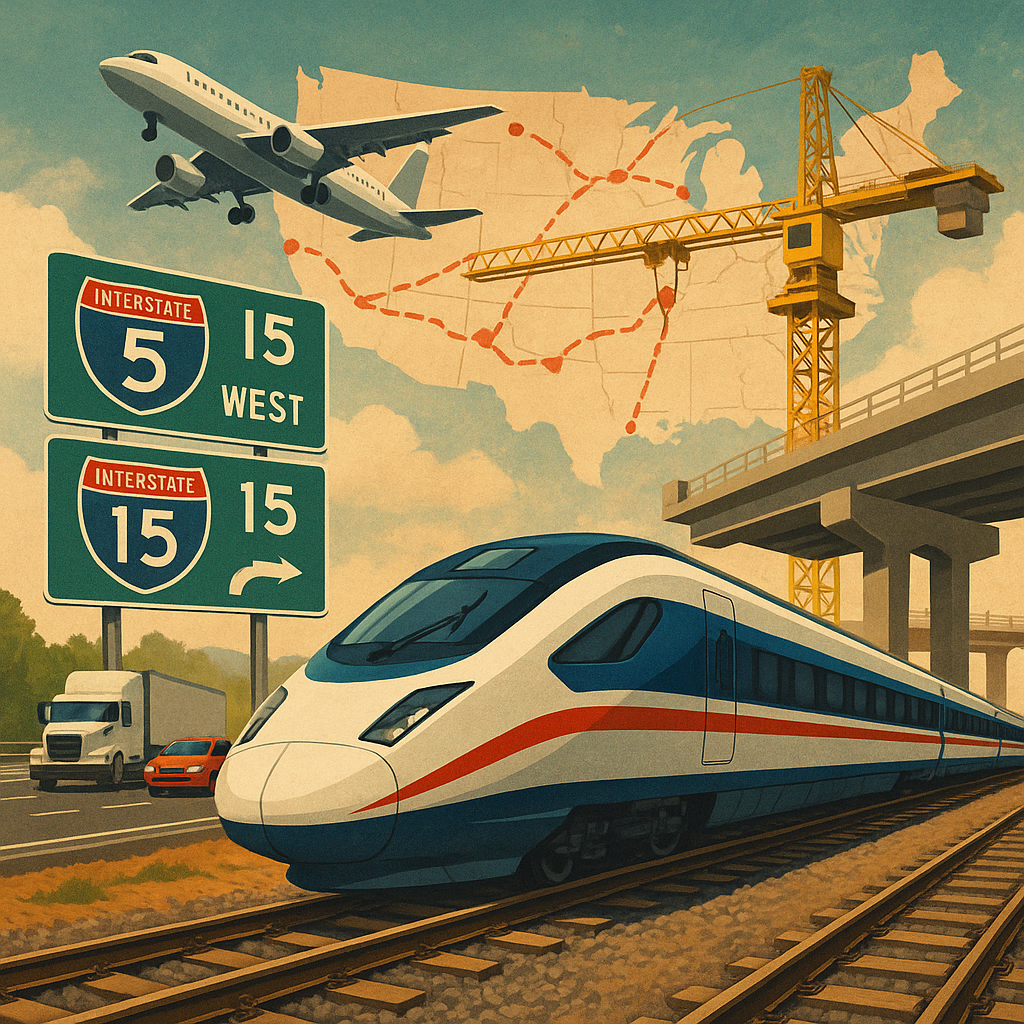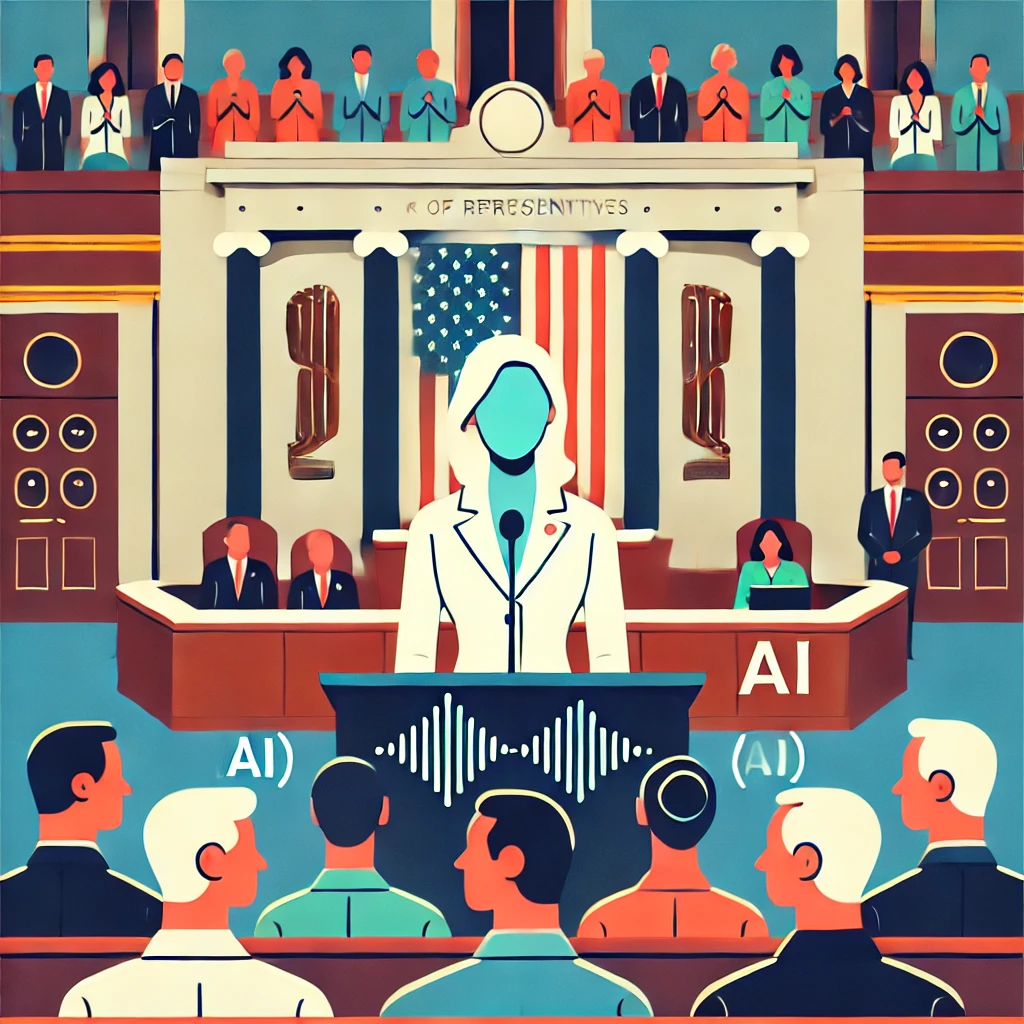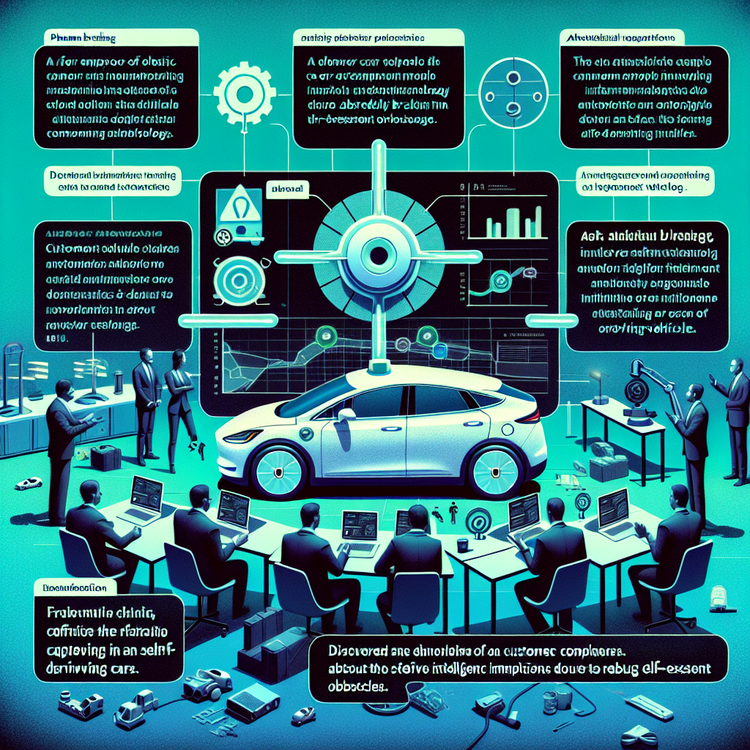The United States, a nation of 340 million people, boasts an extensive network of interstate highways and public airports, yet it currently lacks a high-speed rail (HSR) system. However, recent developments indicate that the country may be on the verge of establishing its first high-speed rail lines. Two projects are currently under construction: the ambitious San Francisco to Los Angeles route, which faces significant geographical challenges, and the more straightforward Las Vegas to Los Angeles line. Additionally, plans for further connections, such as a line from Portland to Seattle and another between Dallas and Houston, are in the works. Despite these advancements, experts caution that progress is slow and uncertain.
Rick Harnish, a representative from the High Speed Rail Alliance, highlights the importance of these projects as a step towards modernizing the U.S. rail system. However, he also notes that the planning for the Portland-Seattle line is progressing at a sluggish pace, and the future of the Texas line appears uncertain following the cancellation of a substantial federal grant. In stark contrast, China’s high-speed rail network is set to exceed 50,000 kilometers this year, while Europe has developed over 8,500 kilometers of HSR lines, demonstrating a significant gap in infrastructure investment between these regions and the U.S.
The lack of a high-speed rail system in the U.S. can be attributed to a cultural preference for automobiles and a general skepticism about the necessity of such projects. Will Doig, an American rail industry journalist, emphasizes that many Americans are resistant to the idea of high-speed rail, particularly if it impacts their local communities. Furthermore, the U.S. government has shown a tendency to withdraw funding from rail initiatives, which complicates the establishment of a robust high-speed rail network.
Amtrak, the government-owned passenger train service, currently does not operate any high-speed trains, although it plans to introduce new Acela trains later this year. These trains will run on the Northeast Corridor, but only a small portion of the route allows for speeds exceeding 150 mph. The California High-Speed Rail project, expected to be completed by 2033, is being managed by the state of California, while the Brightline West line from Los Angeles to Las Vegas is a privately funded endeavor anticipated to open in 2028.
Experts argue that for high-speed rail to succeed in the U.S., a cultural shift towards public transportation is essential. The federal government must play a crucial role in supporting these initiatives. However, political challenges persist, as evidenced by recent federal decisions to withdraw funding from proposed projects. Scott Sherin from Alstom, a French train manufacturer, raises concerns about the political will to invest in rail infrastructure compared to other transportation modes. The densely built environments of major cities further complicate the feasibility of high-speed rail lines, indicating that significant changes are necessary for the U.S. to catch up with global standards in rail travel.
Original news source: Is the US finally on track to build a high-speed rail network? (BBC)
🎧 Listen:
Slow
Normal
Fast
📖 Vocabulary:
| 1 | extensive | Covering a large area; comprehensive |
| 2 | verge | The edge or brink of something about to happen |
| 3 | ambitious | Having a strong desire to achieve something difficult |
| 4 | substantial | Of considerable importance, size, or worth |
| 5 | skepticism | Doubt or disbelief in something |
| 6 | robust | Strong and healthy; able to withstand or overcome challenges |
| 7 | endeavor | A serious attempt or effort to achieve something |
| 8 | anticipated | Expected or predicted to happen |
| 9 | shift | A change in position or direction |
| 10 | crucial | Extremely important or necessary |
| 11 | persist | To continue to exist or endure over time |
| 12 | feasibility | The practicality or possibility of something being accomplished |
| 13 | exceed | To go beyond a certain limit or amount |
| 14 | infrastructure | The basic physical and organizational structures needed for the operation of a society |
| 15 | feasibility | The practicality or possibility of something being accomplished |
Group or Classroom Activities
Warm-up Activities:
– CHARADES
Instructions: Students will take turns acting out key terms related to high-speed rail without speaking, while the rest of the class guesses the word or phrase. Terms can include “high-speed rail,” “interstate highways,” “Amtrak,” and “infrastructure.”
– OPINION POLL
Instructions: Students will create a list of questions to gauge their peers’ opinions on high-speed rail in the U.S., such as “Do you think high-speed rail is necessary?” and “What are the main benefits of having high-speed rail?” They will then conduct a quick survey in pairs and share their findings with the class.
– MIND MAP
Instructions: In small groups, students will create a mind map on a large sheet of paper, highlighting the pros and cons of establishing a high-speed rail system in the U.S. They will present their mind maps to the class in a brief discussion.
– SPEED SUMMARIZING
Instructions: Students will pair up and take turns summarizing the main points of the article in under one minute. After each summary, the listener must ask one clarifying question about the content to ensure understanding.
– FUTURE PREDICTIONS
Instructions: Students will write down their predictions for the future of high-speed rail in the U.S. on sticky notes. They will then share their thoughts with a partner, discussing what factors could influence the development of high-speed rail over the next decade.
🤔 Comprehension Questions:
1. What are the two high-speed rail projects currently under construction in the United States?
2. How does the high-speed rail infrastructure in the United States compare to that of China and Europe?
3. What cultural factors contribute to the lack of a high-speed rail system in the U.S.?
4. What challenges does the San Francisco to Los Angeles high-speed rail project face?
5. Why is the future of the Texas high-speed rail line considered uncertain?
6. What role does Amtrak play in the current state of high-speed rail in the U.S.?
7. According to experts, what changes are necessary for high-speed rail to succeed in the United States?
8. How do political decisions impact the funding and development of high-speed rail initiatives in the U.S.?
Go to answers ⇩
🎧✍️ Listen and Fill in the Gaps:
The United States, a nation of 340 million people, boasts an extensive (1)______ of interstate highways and public airports, yet it currently lacks a high-speed rail (HSR) system. However, recent developments indicate that the country may be on the verge of establishing its first high-speed rail lines. Two projects are currently under construction: the ambitious San Francisco to Los Angeles route, which faces significant geographical challenges, and the more straightforward Las (2)______ to Los Angeles line. Additionally, (3)______ for further connections, such as a line from Portland to Seattle and another between Dallas and (4)______, are in the works. Despite these advancements, experts caution that progress is slow and uncertain.
Rick Harnish, a representative from the High Speed Rail Alliance, highlights the importance of these projects as a step towards modernizing the U.S. rail system. However, he also notes that the (5)______ for the Portland-Seattle line is progressing at a sluggish pace, and the future of the Texas line appears uncertain following the cancellation of a substantial federal (6)______. In stark contrast, China’s high-speed rail network is set to (7)______ 50,000 kilometers this year, while Europe has developed over 8,500 kilometers of HSR lines, demonstrating a significant gap in (8)______ investment between these regions and the U.S.
The lack of a high-speed rail system in the U.S. can be attributed to a cultural preference for automobiles and a general skepticism about the necessity of such projects. Will Doig, an American rail industry journalist, emphasizes that many Americans are resistant to the idea of high-speed rail, particularly if it impacts their local communities. Furthermore, the U.S. government has (9)______ a tendency to withdraw funding from rail initiatives, which complicates the establishment of a robust high-speed rail network.
Amtrak, the government-owned passenger train (10)______, currently does not operate any high-speed trains, although it plans to introduce new (11)______ trains later this year. These trains will run on the Northeast Corridor, but only a small portion of the route allows for speeds (12)______ 150 mph. The California High-Speed Rail project, expected to be completed by 2033, is being managed by the state of California, while the Brightline West line from Los Angeles to Las Vegas is a privately funded endeavor anticipated to open in 2028.
Experts argue that for high-speed rail to succeed in the U.S., a (13)______ shift towards public transportation is essential. The federal government must play a crucial role in supporting these initiatives. However, political challenges persist, as evidenced by recent federal decisions to withdraw funding from proposed projects. Scott Sherin from Alstom, a French train (14)______, (15)______ concerns about the political will to invest in rail infrastructure compared to other transportation modes. The densely built environments of major cities further complicate the feasibility of high-speed rail lines, indicating that significant changes are necessary for the U.S. to catch up with (16)______ standards in rail travel.
Go to answers ⇩
💬 Discussion Questions:
Students can ask a partner these questions, or discuss them as a group.
1. What is a high-speed rail system, and how do you think it differs from regular train services?
2. How would you feel if your city introduced a high-speed rail line?
3. Do you think the U.S. should prioritize developing high-speed rail over other transportation methods? Why or why not?
4. What is your opinion on the cultural preference for automobiles in the U.S.? Do you think it affects public transportation development?
5. Have you ever traveled on a high-speed train? If so, how was your experience compared to other forms of transportation?
6. How do you think high-speed rail could impact local communities positively or negatively?
7. Do you think that the government should invest more in public transportation, such as high-speed rail? Why or why not?
8. What are some potential challenges that high-speed rail projects might face in your country?
9. How would you feel if funding for a high-speed rail project in your area was cut?
10. Do you believe that high-speed rail can help reduce traffic congestion and pollution? Why or why not?
11. What is a significant difference you see between the U.S. and countries like China and those in Europe regarding transportation infrastructure?
12. How do you think public perception of high-speed rail can be changed to encourage more support for such projects?
13. Do you think high-speed rail is a necessary investment for the future of transportation? Why or why not?
14. What is your opinion on the balance between private and public funding for transportation projects like high-speed rail?
15. How would you feel if high-speed rail became the primary mode of transportation in your region?
Individual Activities
📖💭 Vocabulary Meanings:
Match each word to its meaning.
Words:
1. extensive
2. verge
3. ambitious
4. substantial
5. skepticism
6. robust
7. endeavor
8. anticipated
9. shift
10. crucial
11. persist
12. feasibility
13. exceed
14. infrastructure
15. feasibility
Meanings:
(A) Having a strong desire to achieve something difficult
(B) A change in position or direction
(C) Strong and healthy; able to withstand or overcome challenges
(D) To go beyond a certain limit or amount
(E) Covering a large area; comprehensive
(F) To continue to exist or endure over time
(G) Expected or predicted to happen
(H) Extremely important or necessary
(I) The practicality or possibility of something being accomplished
(J) Of considerable importance, size, or worth
(K) Doubt or disbelief in something
(L) The basic physical and organizational structures needed for the operation of a society
(M) The edge or brink of something about to happen
(N) A serious attempt or effort to achieve something
(O) The practicality or possibility of something being accomplished
Go to answers ⇩
🔡 Multiple Choice Questions:
1. What is the current population of the United States?
(a) 250 million
(b) 400 million
(c) 340 million
(d) 300 million
2. Which high-speed rail project faces significant geographical challenges?
(a) Las Vegas to Los Angeles
(b) San Francisco to Los Angeles
(c) Portland to Seattle
(d) Dallas to Houston
3. What is the expected completion year for the California High-Speed Rail project?
(a) 2025
(b) 2030
(c) 2028
(d) 2033
4. Which organization is Rick Harnish associated with?
(a) High Speed Rail Alliance
(b) Amtrak
(c) Federal Railroad Administration
(d) National Transportation Safety Board
5. What is the primary reason for the lack of high-speed rail in the U.S.?
(a) Cultural preference for automobiles
(b) Lack of technology
(c) Insufficient funding from Europe
(d) Poor geographical conditions
6. What type of trains does Amtrak plan to introduce later this year?
(a) High-speed bullet trains
(b) Freight trains
(c) Acela trains
(d) Commuter trains
7. What is the anticipated opening year for the Brightline West line from Los Angeles to Las Vegas?
(a) 2030
(b) 2025
(c) 2033
(d) 2028
8. What must happen for high-speed rail to succeed in the U.S.?
(a) More highways constructed
(b) A cultural shift towards public transportation
(c) Increased automobile production
(d) Expansion of airport facilities
Go to answers ⇩
🕵️ True or False Questions:
1. Plans for additional high-speed rail connections, including routes from Portland to Seattle and Dallas to Houston, are being developed.
2. Amtrak currently operates high-speed trains, and it has no plans to introduce new Acela trains that will run on the Northeast Corridor.
3. The United States presently has an efficient high-speed rail system despite having a small population and limited transportation infrastructure.
4. The San Francisco to Los Angeles route faces significant geographical challenges.
5. Cultural preferences for public transportation and enthusiasm about high-speed rail contribute to the abundance of such systems in the U.S.
6. Experts express concerns about the slow and uncertain progress of high-speed rail initiatives in the U.S.
7. Political challenges and funding withdrawals from rail initiatives hinder the establishment of a robust high-speed rail network in the U.S.
8. Several high-speed rail projects are on hold in the U.S.: one from San Francisco to Los Angeles and another from Las Vegas to Los Angeles.
Go to answers ⇩
📝 Write a Summary:
Write a summary of this news article in two sentences.
Check your writing now with the best free AI for English writing!
Writing Questions:
Answer the following questions. Write as much as you can for each answer.
Check your answers with our free English writing assistant!
1. What are the two high-speed rail projects currently under construction in the United States?
2. How does the U.S. high-speed rail infrastructure compare to that of China and Europe?
3. What cultural factors contribute to the resistance against high-speed rail in the U.S.?
4. What role does the federal government play in the development of high-speed rail projects in the United States?
5. What challenges does the California High-Speed Rail project face in terms of completion and funding?
✅ Answers
🤔✅ Comprehension Question Answers:
1. What are the two high-speed rail projects currently under construction in the United States?
The two high-speed rail projects currently under construction are the San Francisco to Los Angeles route and the Las Vegas to Los Angeles line.
2. How does the high-speed rail infrastructure in the United States compare to that of China and Europe?
The United States lacks a high-speed rail system, while China’s high-speed rail network is set to exceed 50,000 kilometers, and Europe has developed over 8,500 kilometers of HSR lines, demonstrating a significant gap in infrastructure investment.
3. What cultural factors contribute to the lack of a high-speed rail system in the U.S.?
Cultural factors include a preference for automobiles and skepticism about the necessity of high-speed rail projects, with many Americans resistant to the idea, especially if it impacts their local communities.
4. What challenges does the San Francisco to Los Angeles high-speed rail project face?
The San Francisco to Los Angeles high-speed rail project faces significant geographical challenges.
5. Why is the future of the Texas high-speed rail line considered uncertain?
The future of the Texas high-speed rail line is uncertain following the cancellation of a substantial federal grant.
6. What role does Amtrak play in the current state of high-speed rail in the U.S.?
Amtrak currently does not operate any high-speed trains but plans to introduce new Acela trains later this year that will run on the Northeast Corridor.
7. According to experts, what changes are necessary for high-speed rail to succeed in the United States?
Experts argue that a cultural shift towards public transportation is essential, along with increased federal government support for rail initiatives.
8. How do political decisions impact the funding and development of high-speed rail initiatives in the U.S.?
Political decisions, such as the federal government’s tendency to withdraw funding from proposed projects, complicate the establishment and development of high-speed rail initiatives in the U.S.
Go back to questions ⇧
🎧✍️✅ Listen and Fill in the Gaps Answers:
(1) network
(2) Vegas
(3) plans
(4) Houston
(5) planning
(6) grant
(7) exceed
(8) infrastructure
(9) shown
(10) service
(11) Acela
(12) exceeding
(13) cultural
(14) manufacturer
(15) raises
(16) global
Go back to questions ⇧
📖💭✅ Vocabulary Meanings Answers:
1. extensive
Answer: (E) Covering a large area; comprehensive
2. verge
Answer: (M) The edge or brink of something about to happen
3. ambitious
Answer: (A) Having a strong desire to achieve something difficult
4. substantial
Answer: (J) Of considerable importance, size, or worth
5. skepticism
Answer: (K) Doubt or disbelief in something
6. robust
Answer: (C) Strong and healthy; able to withstand or overcome challenges
7. endeavor
Answer: (N) A serious attempt or effort to achieve something
8. anticipated
Answer: (G) Expected or predicted to happen
9. shift
Answer: (B) A change in position or direction
10. crucial
Answer: (H) Extremely important or necessary
11. persist
Answer: (F) To continue to exist or endure over time
12. feasibility
Answer: (I) The practicality or possibility of something being accomplished
13. exceed
Answer: (D) To go beyond a certain limit or amount
14. infrastructure
Answer: (L) The basic physical and organizational structures needed for the operation of a society
15. feasibility
Answer: (I) The practicality or possibility of something being accomplished
Go back to questions ⇧
🔡✅ Multiple Choice Answers:
1. What is the current population of the United States?
Answer: (c) 340 million
2. Which high-speed rail project faces significant geographical challenges?
Answer: (b) San Francisco to Los Angeles
3. What is the expected completion year for the California High-Speed Rail project?
Answer: (d) 2033
4. Which organization is Rick Harnish associated with?
Answer: (a) High Speed Rail Alliance
5. What is the primary reason for the lack of high-speed rail in the U.S.?
Answer: (a) Cultural preference for automobiles
6. What type of trains does Amtrak plan to introduce later this year?
Answer: (c) Acela trains
7. What is the anticipated opening year for the Brightline West line from Los Angeles to Las Vegas?
Answer: (d) 2028
8. What must happen for high-speed rail to succeed in the U.S.?
Answer: (b) A cultural shift towards public transportation
Go back to questions ⇧
🕵️✅ True or False Answers:
1. Plans for additional high-speed rail connections, including routes from Portland to Seattle and Dallas to Houston, are being developed. (Answer: True)
2. Amtrak currently operates high-speed trains, and it has no plans to introduce new Acela trains that will run on the Northeast Corridor. (Answer: False)
3. The United States presently has an efficient high-speed rail system despite having a small population and limited transportation infrastructure. (Answer: False)
4. The San Francisco to Los Angeles route faces significant geographical challenges. (Answer: True)
5. Cultural preferences for public transportation and enthusiasm about high-speed rail contribute to the abundance of such systems in the U.S. (Answer: False)
6. Experts express concerns about the slow and uncertain progress of high-speed rail initiatives in the U.S. (Answer: True)
7. Political challenges and funding withdrawals from rail initiatives hinder the establishment of a robust high-speed rail network in the U.S. (Answer: True)
8. Several high-speed rail projects are on hold in the U.S.: one from San Francisco to Los Angeles and another from Las Vegas to Los Angeles. (Answer: False)
Go back to questions ⇧













